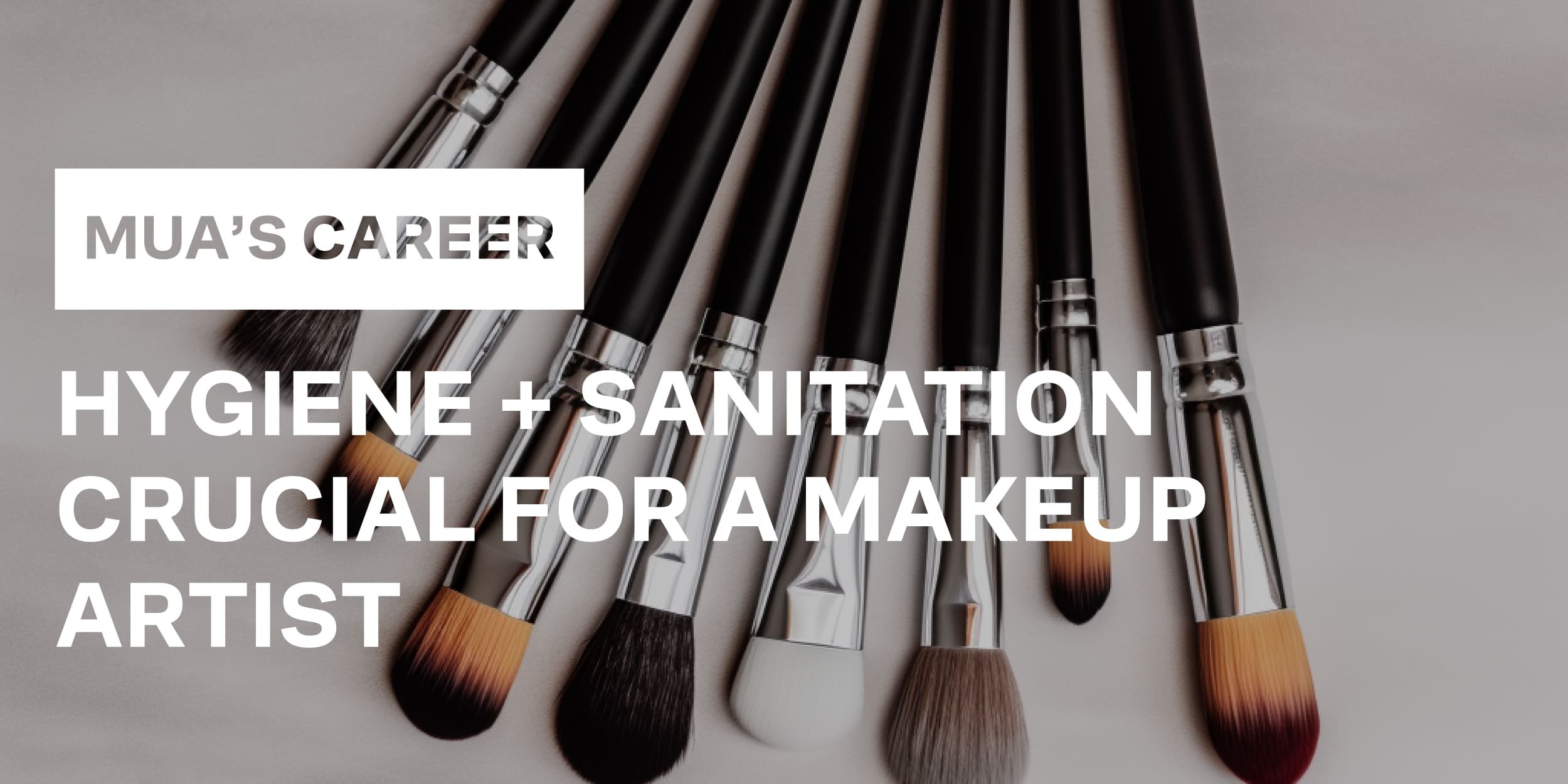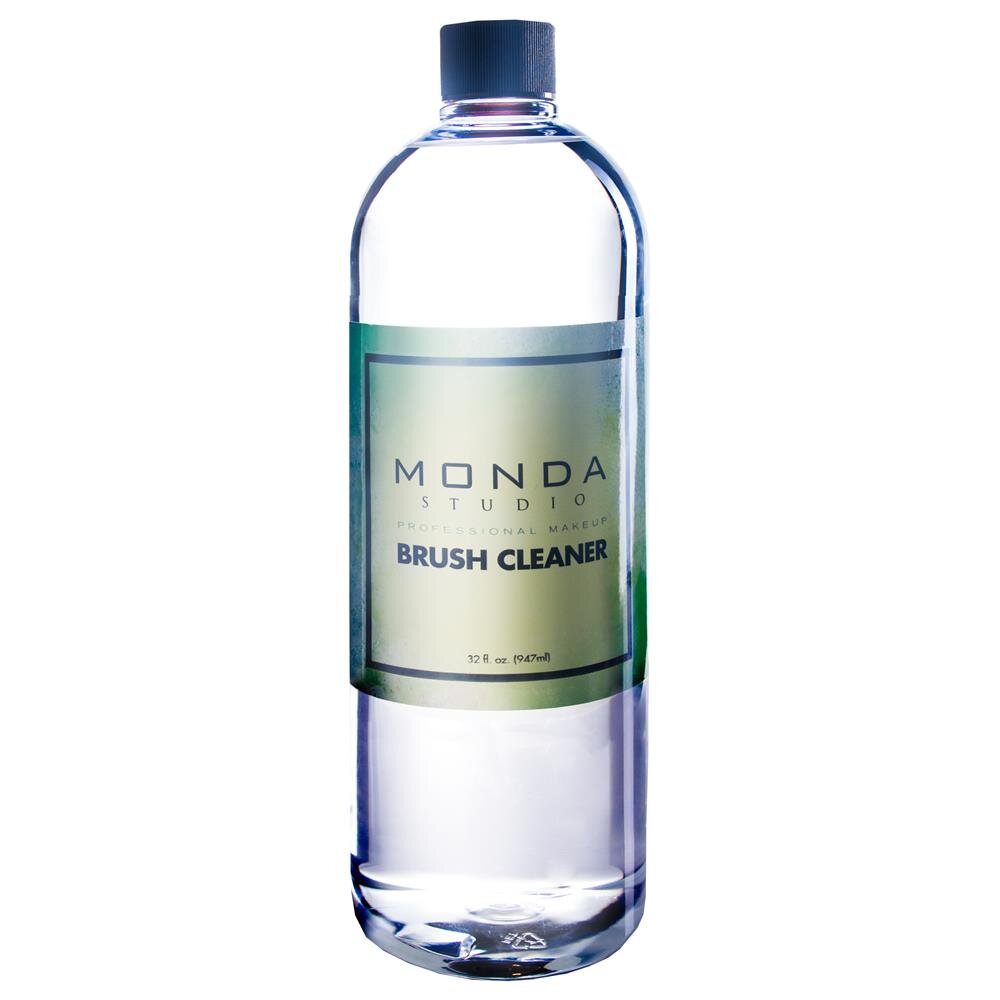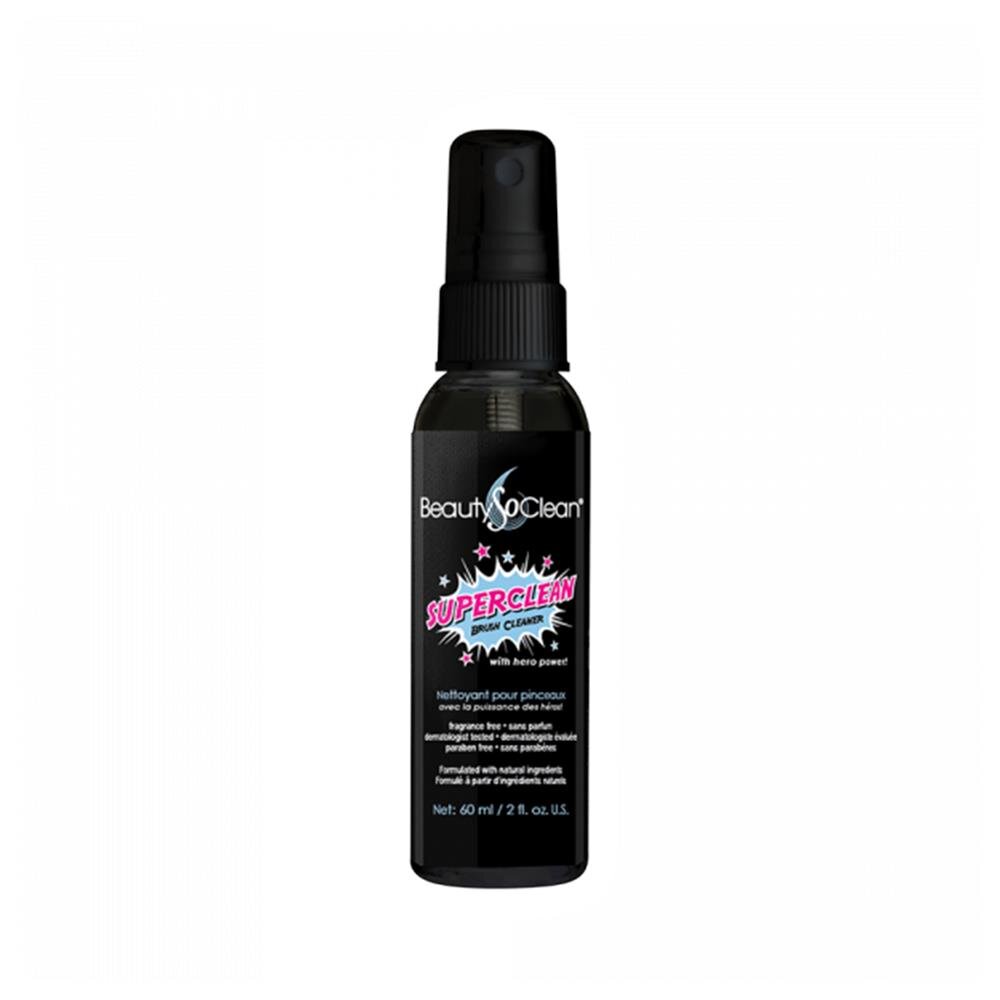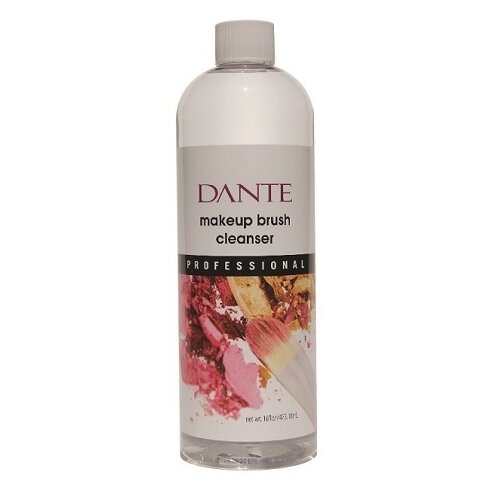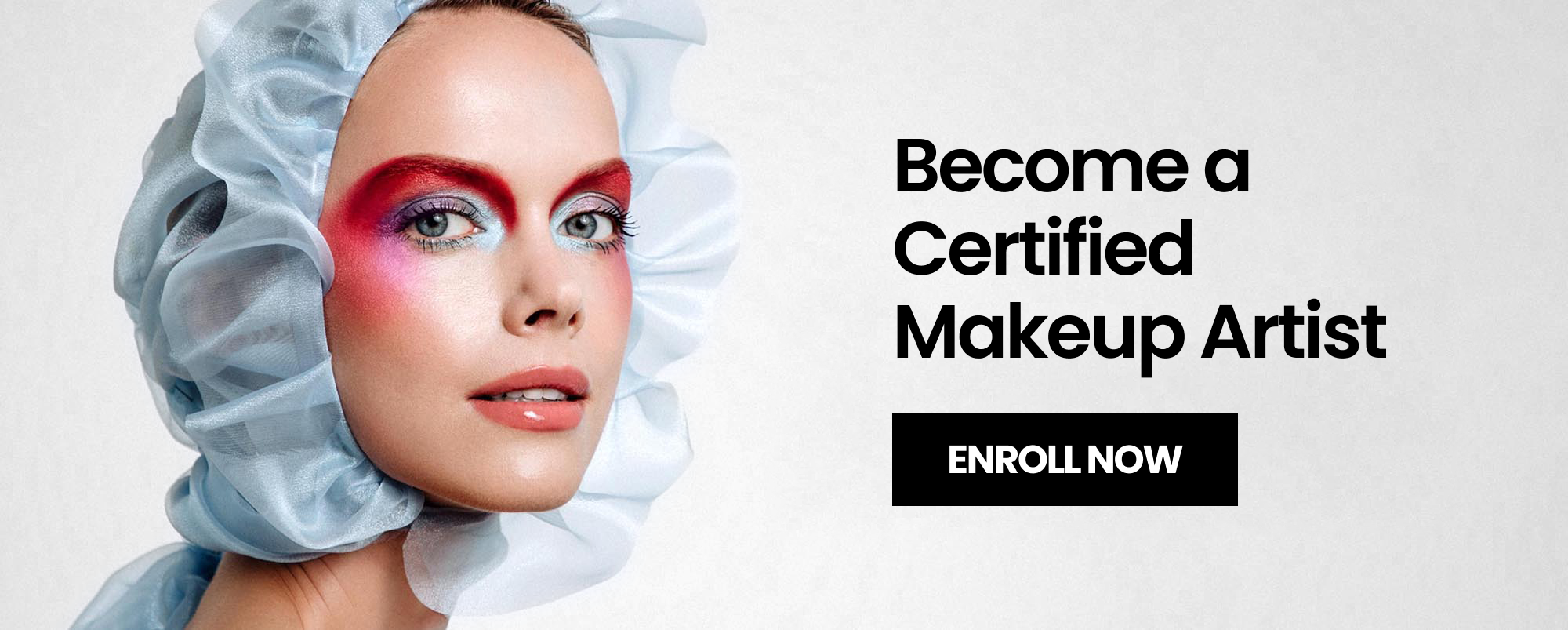Hygiene + sanitation crucial for a makeup artist
Hygiene is a fundamental concept in the work of a makeup artist. This is not only a rule, but also an expression of respect and a careful and caring attitude towards customers. Moreover, it is one of your many responsibilities you have as a makeup professional. Nothing is more important than protecting your client’s health and safety.
Products you must have in your kit to remain sanitary:
-Disposable tools (sponges, eyeshadow applicators, lip brushes, mascara wands, cotton rounds, q-tips).
-Metal plate + spatula (you will always use this to apply cream product, you will never double dip).
-Powder products, use a clean paper towel + 70% isopropyl alcohol spray to remove top surface layer.
-Professional brush cleaner (this is used for quick on set cleaning, you must always do a deep clean on your brushes after use).
-Alcohol (70%) - saturate and let sit for 30 seconds and wipe off.
-Trash bag (to keep your station clean and sanitary).
-Ziploc or reusable (washable) bags to put dirty brushes in (if there is not enough time to clean on set) - this is a good way to keep your dirty brushes separate from your other items in the kit - make sure to mark the bag somehow so you know never to cross contaminate.
-Paper towels + tissues
The main tool of a makeup artist is brushes which should be kept clean – it affects not only the quality of the makeup you create, but also the health of your customers. Dirty makeup tools accumulate bacteria, and can cause fungus, herpes, allergies and other infections. So a makeup artist should always keep them clean and sanitary.
Natural brushes are best cleaned with special shampoo for brushes, because it has a specific composition, which allows the pile to maintain its original appearance for a longer period, unlike simple shampoo or soap. Synthetic brushes can be cleaned with any solid soap. It is not recommended to use liquid soap, as it's residue can remain, especially from dense brushes. If choosing a liquid soap, use a mild detergent (such as dawn) which cleans and sanitizes.
Of course if you are working with multple clients at once (a bridal party, a runway set), it may be impossible to wash the brushes with shampoo before each client. Therefore, ideally, the makeup artist should have several sets of brushes. We also recommend to use special disinfectants for brushes that not only clean the pile, but also disinfect it. Such conditioners are typically alcohol-based. It is enough to spray a small amount of conditioner onto the brush and swipe it on a napkin in a circular motion until the brush leaves no residue. But do not abuse this method of cleansing, with frequent use, natural bristles of brushes can deteriorate faster.
Here are a few general tips on how to clean your brushes:
-Clean brushes using a brush cleaner such as Monda Studio, The SuperClean, Musst brush cleanser, Dante, Parian Spirit.
-Bristles must be saturated with brush cleaner after each client application
-Clean handles using a clorox/disinfecting cosmetic wipes
-Deep and spot cleaning takes time to dry so keep yourself a set of duplicate brushes
-Clean your brushes on 'brush shampoo' on average at least twice weekly (preferably daily)
We selected the best products below according to reviews. Click on each one of them and buy.
Tweezers, curlers for eyelash curlers, scissors, spatulas, palettes and other tools must also be cleaned. To do this, you can use alcohol wipes, and any other disinfectants. The use of disposable tools is encouraged – some products can be applied, for example, using a cotton swab or cosmetic sponges. You may never double dip – spoolies, lipwands, sponges! If you need to reach back into the product, use a new disposable, or your entire product will be contaminated and unsanitary. Always only apply your product, when possible on your metal makeup palette with spatula. Never double dip into a container.
When choosing cosmetics, give preference to products that are released in a package with a dispenser. This is especially true for care products: face creams are most often produced in open jars. This creates certain risks – putting fingers in a jar, we leave germs there; never apply your fingers in any product as a professional (you can use your sanitized spatula to apply onto your palette surface and then use). Products with a dispenser solve this problem: air and bacteria do not permeate inside. However, cosmetics also need to be disinfected. Use special disinfectant sprays to clean dry products. The ingredients included in the spray do not spoil the makeup and texture of the cosmetics, but remove all germs and bacteria. For cream textures (lipsticks, mascaras, cream eyeshadows, etc.), alcohol wipes are suitable. Do not be lazy and periodically wipe and sanitize all the tubes, jars, caps of foundation, etc.
Do not to forget to check the expiration date of your makeup products and replace it:
-mascara/eyeliner – every 4-6 months
-foundation – 6 months
-powder products – 1+ year (if it starts to change in appearance or smell)
-lipstick, liner, gloss – up to 2 years (if it starts to change in appearance or smell)
Before starting work, be sure to wash your hands and wipe with a special disinfectant (hand sanitizer to have on hand is great), before each touch on the skin, lips, also wipe your hands with a disenfectant. Hand washing is one of the most important procedures in the infection control procedure and is required in every state before any service:
1. Turn on the water, wet hands, and then pump soap from a pump container onto the palm of your hand. Rub your hands together, all over and vigorously, until a lather forms. Continue for a minimum of 20 seconds.
2. Choose a clean, disinfected nail brush. Wet the nail brush, pump soap on it, and brush your nails horizontally back and forth under the free edges. Change the direction of the brush to vertical and move the brush up and down along the nail folds of the fingernails. The process for brushing both hands should take about 60 seconds to finish. Rinse hands in running water.
3. Use a clean cloth or paper towel, according to the salon policies for drying your hands.
4. After drying hands, turn off the water with the towel and dispose of the towel.
Always ask your client if they have any allergies or sensitivites. Before makeup application always spray your products with cosmetic sanitizer mist and organize your kit before each client and make sure the products and tools are clean and sanitary (it's a great extra step to also give your clients peace of mind if they visually see you sanitizing your workspace and tools in the preparation for their makeup appilcation!). During makeup application always transfer all cream based products you plan to use on the client to your sanitized metal plate using spatula. Never dip and redip. Have a disposable wand for mascara, lip, foundation, etc. application included in your kit. Never use the original mascara wand included in the product for your client kit. Pencils should be sprayed with alcohol, wiped down, sharpened, and sprayed/wiped down again. For lipstick and gloss after spraying the product with cleaning mist, use the metal plate and spatula to take the product from the tube, place it onto your spatula, and use a disposable lip brush to apply. After the makeup application spray metal plate and spatula with alcohol or cosmetic cleaner after each use thoroughly. Re-organize your kit and spot clean brushes using makeup brush cleaner at minimum twice a week. Immediately throw away all used disposable tools.
An area where a makeup artist works should be clean too. At the workplace there should be no objects other than tools, care products and cosmetics. Keep floors and workstations dust-free and all work areas well-lit. Take care about restrooms – clean door handles, provide toilet tissue, paper towels, liquid soap, properly disinfected soft-bristled nail brushes, and a container for used brushes in the restroom. Prohibit eating, drinking and smoking in areas where services are performed.

